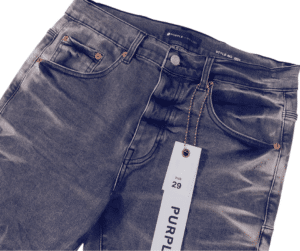Is Sclerotherapy the Right Treatment for You?
If you are suffering from varicose veins or other vein diseases, sclerotherapy might be a good option for you. This treatment is simple, minimally invasive, and doesn’t interrupt your daily life. Here are a few things you should know before you decide if it’s what you need.
What It Is
Sclerotherapy treatment has been used for many, many years which has given it plenty of time to evolve into the treatment it is today. It is a very quick procedure and has a very high success rate. The treatment involves an injection that goes directly into the vein or lymph vessel. The injection includes a solution, such as a salt solution, that irritates the walls of the vessel. The irritation causes the vessel to scar and shrink. Your body fluids will then be redirected to healthier vessels and the collapsed vessel will eventually fade away.
The Benefits
One big benefit of the treatment is that it’s minimally invasive. You don’t need to undergo any special surgery and you don’t need to do any preparation. Although, some doctors may ask that you don’t use lotion or oils before the treatment. While having the treatment, you also don’t need to be under any anesthesia. It’s a simple injection and then you can walk right out of the office. You can get right back into your routine. The greatest benefit of all is that sclerotherapy can relieve the pain you may be feeling due to varicose veins.
Who Should Get It
Sclerotherapy is most commonly used by individuals with varicose veins and other related ailments. Varicose veins are the result of increased blood pressure in the veins and weak vein walls and valves. This causes veins to collapse and swell. While varicose veins are primarily a cosmetic concern, they can become painful. You should consider sclerotherapy if you are experiencing any pain or discomfort, if your skin feels dry and patchy near the veins, or if a rash is forming.
In addition to varicose veins, sclerotherapy is commonly used to treat spider veins. Sclerotherapy can also be used to treat malformed lymph vessels, hemorrhoids, and hydroceles. Make sure you consult with a doctor about possible treatment plans and recommendations.
What to Expect
As with any treatment, it’s important to know what to expect. During the treatment, you will lie back with your legs elevated. The doctor will clean the area and then insert the needle. Some people feel a burning or tingling feeling while others may feel nothing. Afterward, you may have slight bruising and your leg may be tender. After the injection, a compression pad is applied while other veins are treated. After that, you may be asked to wear compression socks. Once the treatment is done, you are free to walk around. This is encouraged as it helps to prevent blood clots from forming. However, you should avoid any higher intensity activity for 3-5 days after the treatment. In some cases, you may need multiple treatments. This is especially true if you have many varicose veins or very large veins.
Risks
Overall, sclerotherapy is a very low-risk procedure since it isn’t very invasive and doesn’t require anesthesia. However, there are still some risks to be aware of. First of all, you may experience pain, bruising, or redness at the injection site. Although, this will go away with time. It is also common to see smaller branches of veins develop around the injection site, but these will also go away. Some individuals may have an allergic reaction to the solution being injected. It is also possible for air bubbles from the needle to enter the bloodstream and this may cause headaches, nausea, and vision changes. Finally, there is a possibility of blood clots forming. Fortunately, this is very rare. Be sure to consult with your doctor so you can be aware of all risks and how to handle them.
Alternatives to Sclerotherapy
In some cases, you may not want to or be able to undergo sclerotherapy treatment. Fortunately, there are alternatives to consider. First, you can try some lifestyle changes. Regular exercise is recommended because it helps to get the blood flowing. Along these lines, getting down to a healthier weight can help to relieve pressure on your veins. You can also try compression therapy, which involves wearing compression socks. This can help relieve any swelling or pain and is often recommended to anyone who sits or stands for long periods. You can also ask your doctor about medication available to treat varicose veins. If nothing else seems to work, there are other procedures to look into including vein removal and endovenous ablation. As always, talk to your doctor before taking any action.
Sclerotherapy is a quick and easy procedure that can help relieve you of any pain. While it is relatively low-risk and minimally invasive, it’s important to be informed before undergoing any kind of treatment. Consult with your doctor to make sure you make the right decision.
Read this next: Natural Health Remedies You Need to Try







